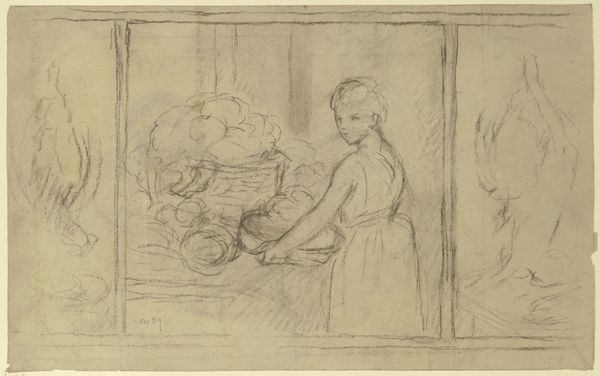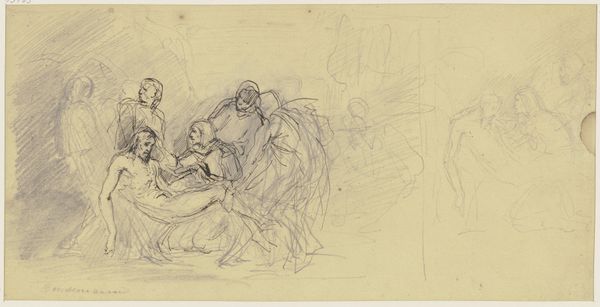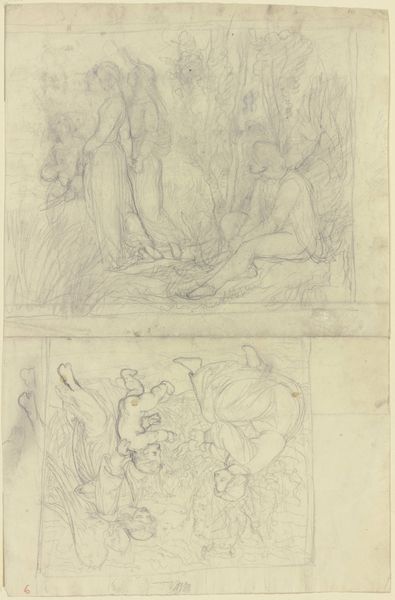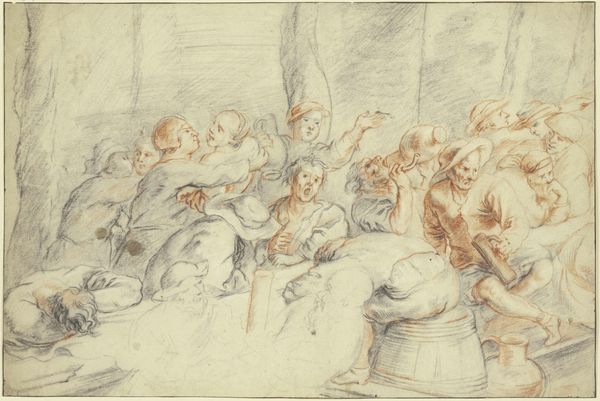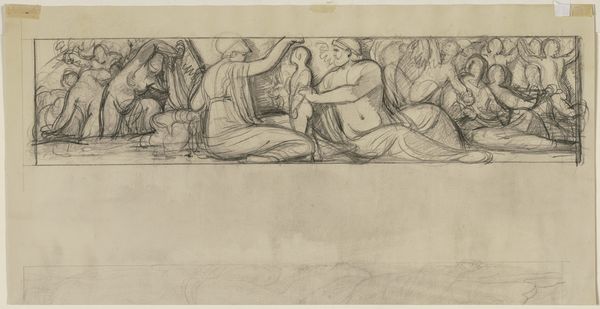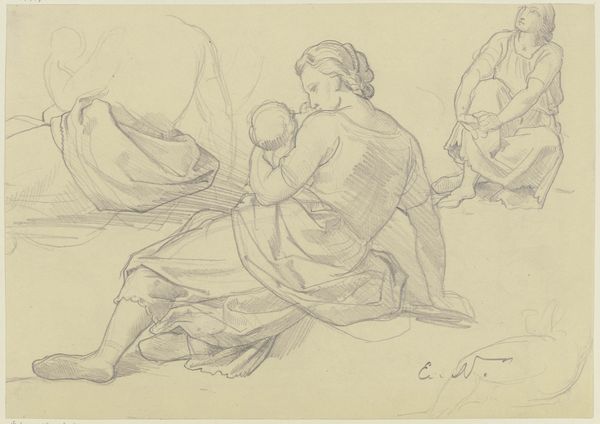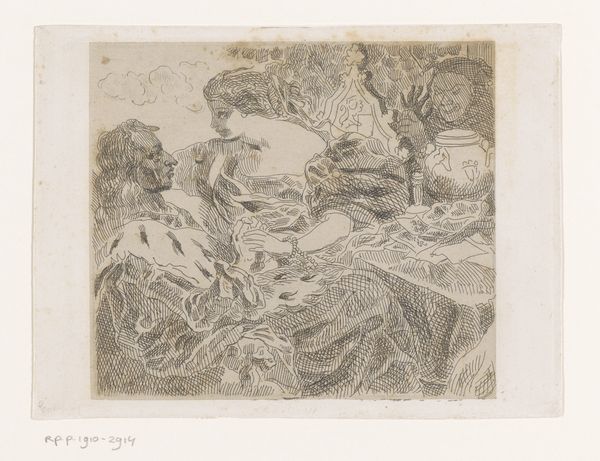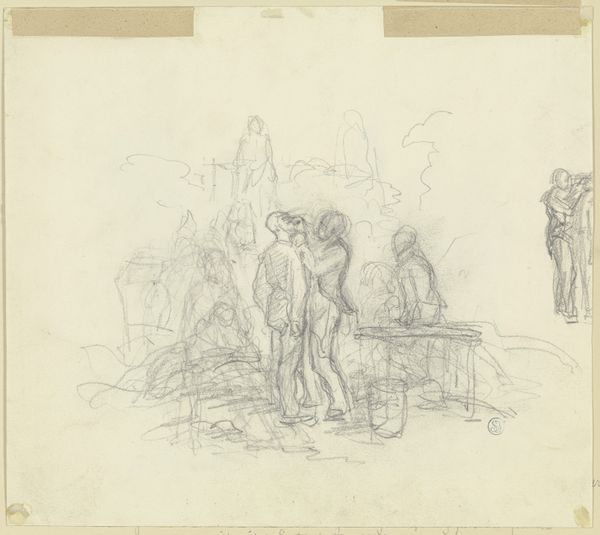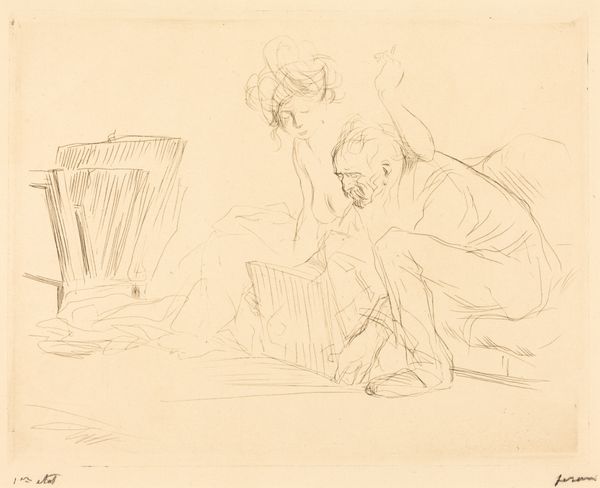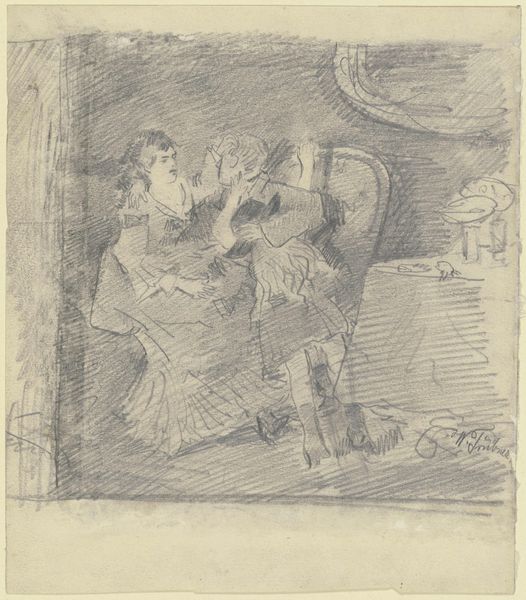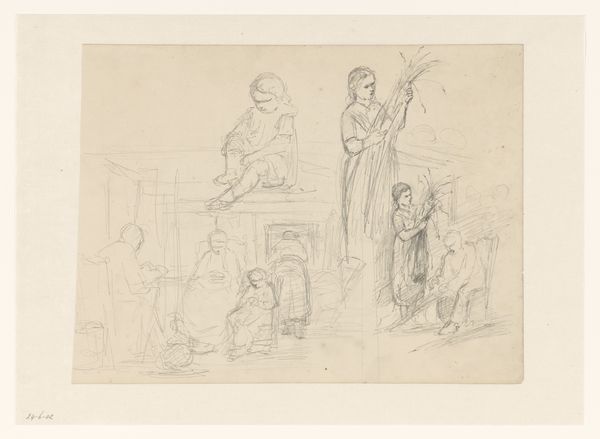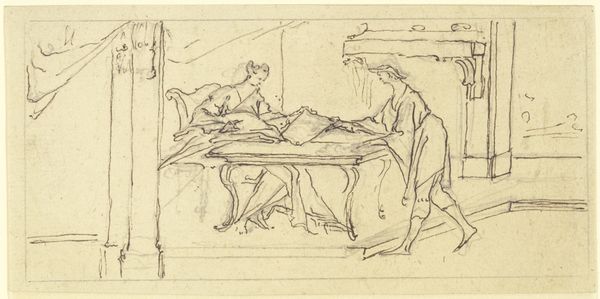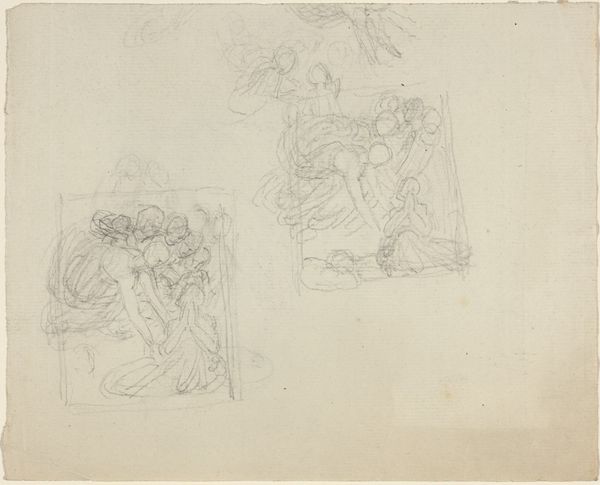
drawing, paper, charcoal
#
drawing
#
16_19th-century
#
charcoal drawing
#
paper
#
charcoal
#
northern-renaissance
Copyright: Public Domain
Curator: This is Otto Scholderer’s "Still Life Triptych," dating back to around 1889. It’s currently housed here at the Städel Museum. The piece is rendered in charcoal on paper. Editor: It's remarkably unsettling. There's a tenderness in the depiction of the girl, but the dead game birds bookending the scene give it a dark undercurrent. Curator: Triptychs, of course, traditionally evoke religious art. Considering this was made towards the end of the 19th century, Scholderer seems to be deliberately subverting those conventions by placing ordinary, domestic imagery into that format. Notice the interplay between the central panel featuring the woman with a basket and the flanking panels of game. The contrast could represent life and death. Editor: Or the exploitation of nature that underpins so much of domestic life and class structure. These are not romantic scenes of harvest. These are butchered animals displayed within a rigid, patriarchal framework. Who is she shopping for? Why are they displaying their kill in the window of her consciousness? The gaze seems downcast, almost defeated. Curator: But isn’t there a tradition, especially within Dutch Golden Age painting, of still life acting as memento mori? It could signal the ephemeral nature of existence. Charcoal as the medium could be related to the use of grisaille, a black-and-white style used in paintings in the Middle Ages as the background on altarpieces, reminiscent of religious iconography. Editor: Absolutely, there's a connection, but by appropriating the triptych, which traditionally sanctifies stories, he brings these questions of consumption and value—of natural life versus commodity—into a different register, perhaps questioning the sanctimony surrounding these social and economic structures. It demands a more direct, even accusatory, look. Curator: It's that tension between the quotidian and the monumental that fascinates me. Scholderer's using established visual vocabulary to challenge our reading of everyday scenes and create enduring meanings. The three-panel form really invites us to decode beyond a single moment and a static composition. Editor: I agree; it's like looking at our reflection in a window. A reminder that the quiet moments of life, or quiet acts of cruelty, often occur within the grandest, most consequential societal constructs. And they demand change. Curator: Thanks for unpacking the deeper meanings layered into the symbolism! Editor: Glad to be with you!
Comments
No comments
Be the first to comment and join the conversation on the ultimate creative platform.
